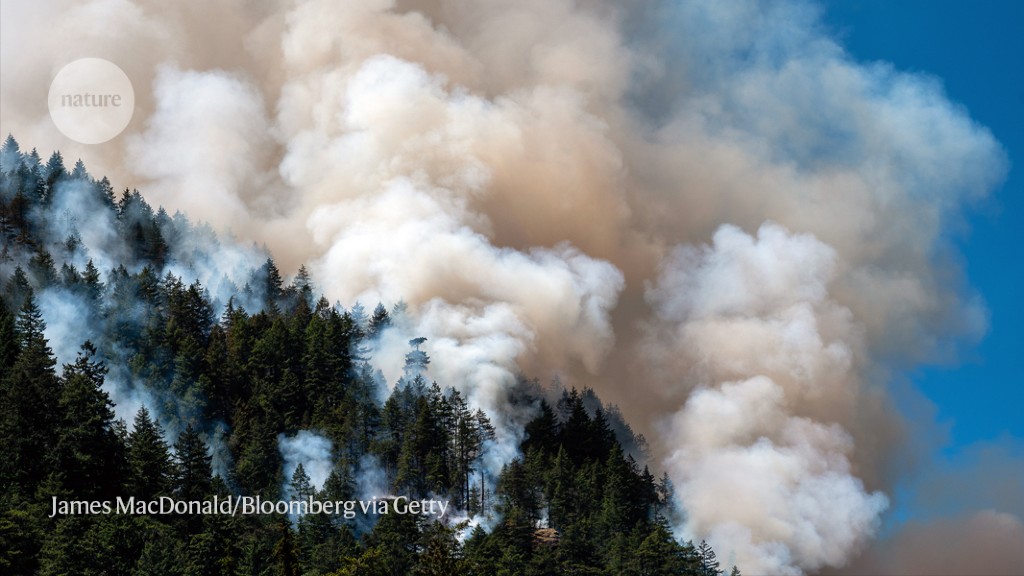Why are the Canadian wildfires so bad this year?

Hot, dry weather and human carelessness have led to a huge burnt area — and to choking haze affecting millions of people

Smoke billows from a wildfire near Port Alberni in western Canada on 6 June.Credit: James MacDonald/Bloomberg via Getty
Smoke from wildfires raging in eastern Canada has been filling lungs and turning skies orange across the northeastern United States, most dramatically in New York City and the surrounding area, for the past week. Although people in western North America have gotten used to such conditions in the past few years, they are unusual in the eastern part of the continent — so what is causing this extraordinary fire season?
“The number one cause is the weather,” says Anthony Taylor, a forest-management specialist at the University of New Brunswick in Fredericton. Fires in Canada are routine, but it has been an especially warm and dry spring across much of the country. That’s particularly true in eastern Canada, which had around 50% less spring precipitation than usual, he says. In western Canada, May was the warmest and driest on record, says David Phillips, a climatologist at Environment and Climate Change Canada.
No blaming El Niño
There is no solid explanation for this year’s anomalous spring. Piyush Jain, a research scientist at the Canadian Forest Service, says it is unlikely to be related to an El Niño climate pattern, which brings warmer temperatures to the eastern Pacific Ocean and tends to warm the planet as a whole. The US National Oceanographic and Atmospheric Administration confirmed yesterday that an El Niño has arrived, but its effects are not expected to show up until later in the year. Still, extraordinary weather is not unexpected as the planet warms. “Climate change is definitely a factor that is causing these extreme conditions to occur more frequently,” says Jain.
The warmth and lack of rain left soils and forests as dry as tinder, so when a fire ignites it can grow and spread quickly — including in places where large, destructive fires are usually rare, such as the eastern provinces of New Brunswick and Nova Scotia. More than 4 million hectares of forest have already burnt across Canada this year — double the historical average and a number that is usually reached much later in the season (see ‘Early start’).
Source: Canadian Wildland Fire Information System
Nor is it common for the smoke to affect so many people in the eastern United States. The reason for the orange skies in New York City and elsewhere this past week is a large low-pressure system that has been sitting over Maine for several days. The system is blocking transport of the smoke to the east, while the system’s counter-clockwise winds are acting like a conveyor belt, dragging the smoke south to the eastern seaboard, says Jain. The system should start to break up over the weekend, bringing some relief.
The on-the-ground causes of the fires vary across the country. The broad band of fires burning across the middle of the province of Quebec, whose smoke is travelling to New York City and other US sites, were probably ignited by lightning, says Marc-André Parisien, a research scientist at the Canadian Forest Service. Lightning is usually responsible for about half of all fires in Canada, and 85% of the area burnt each year.
Human mistakes
But this year, most of the fires in the western provinces and on the east coast came earlier in the year than lightning is typically reported and were probably caused by human activity. One fire near St Andrews, in New Brunswick province, for example, started when an all-terrain vehicle caught fire on a trail, igniting the surrounding woods. “The biggest thing we need to do, especially in the east, is make people aware of their role in fires,” says Taylor.
The year’s extreme fire season is part of an ongoing trend in Canada and around the world, says Parisien. Canada has more large fires, they are burning larger areas and the fire season is getting longer — it now starts about a week earlier and ends a week later than it did 50 years ago1. Extreme weather that promotes fire — hot, dry and windy — is becoming more common both in Canada and globally2.
Despite the huge areas that have already burned this year, we are not out of the woods yet. Depending on the weather, the fires could continue for months with little respite. “If the warm dry weather continues, there is lots of fuel in the forest to burn,” says Taylor. “It’s not going to be exhausted anytime soon.”
doi: https://doi.org/10.1038/d41586-023-01902-4
This story originally appeared on: Nature - Author:Brian Owens


















